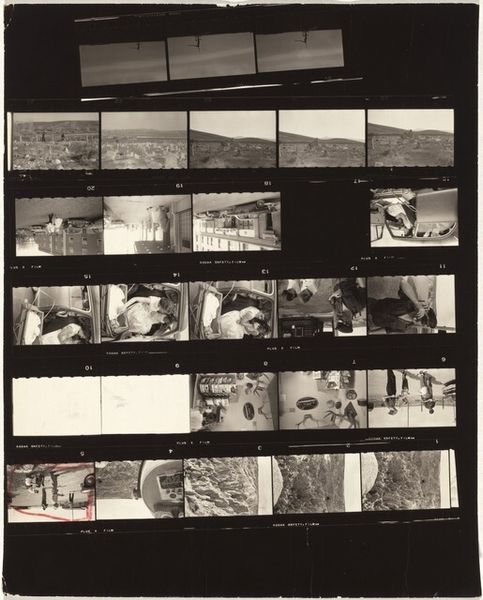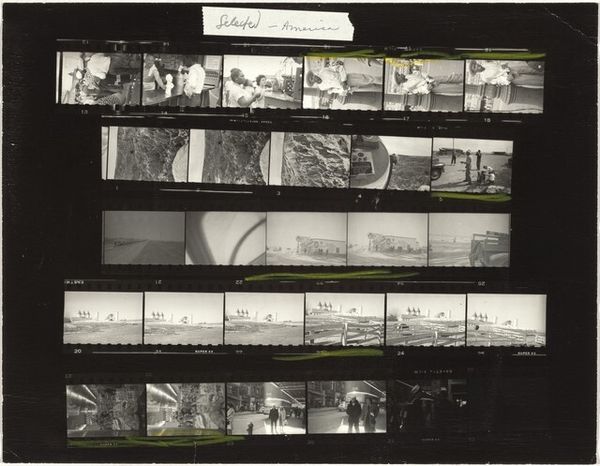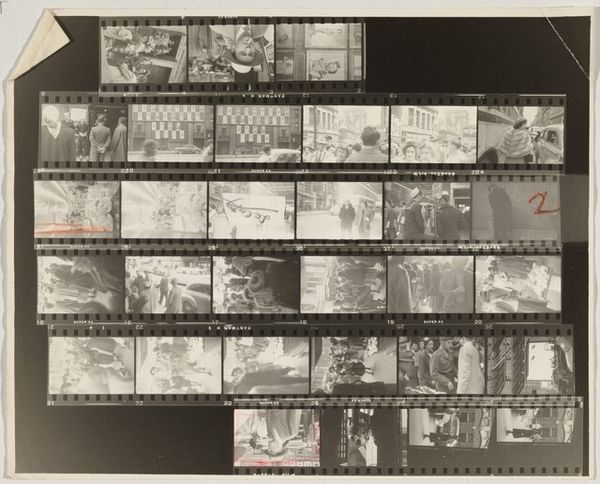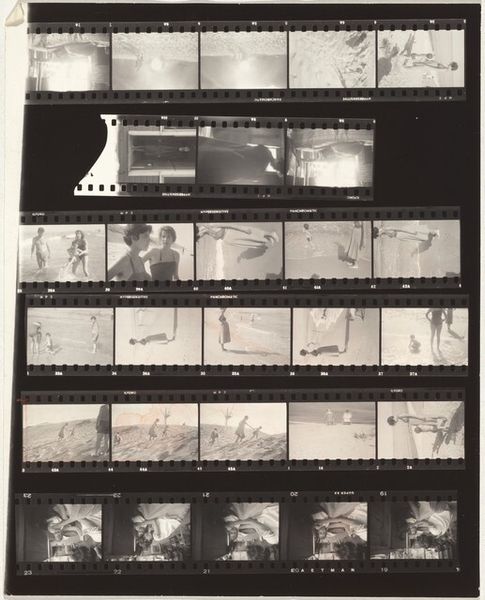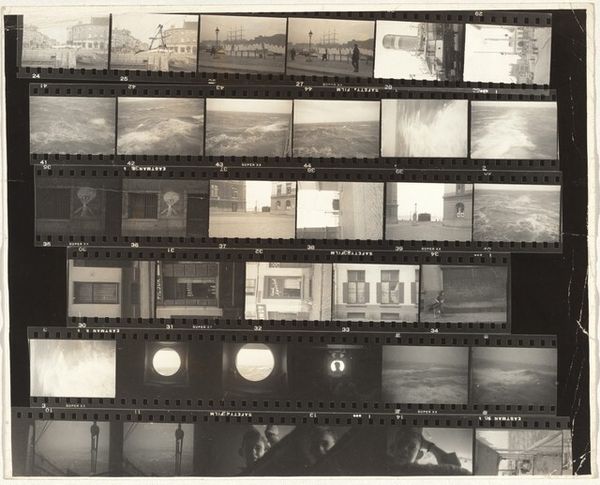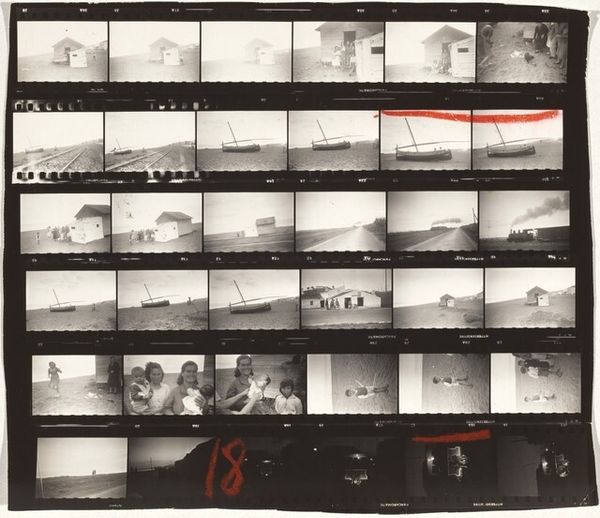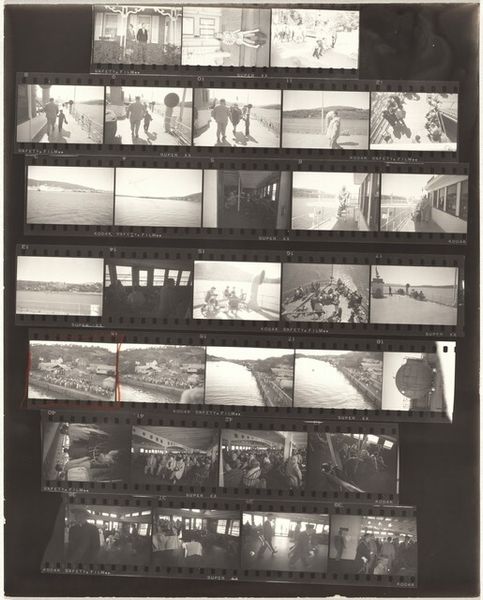
Dimensions: overall: 20.3 x 25.7 cm (8 x 10 1/8 in.)
Copyright: National Gallery of Art: CC0 1.0
Editor: Robert Frank's "Wales 10," a gelatin-silver print from 1953, presents a series of exposures on a film strip, capturing the Welsh landscape and its inhabitants. There's something about seeing the raw film strip itself that's quite compelling. What do you see in this piece, especially considering Frank's usual documentary style? Curator: The material process here is key. Frank's "Wales 10" isn’t just about the image; it's about the physical act of capturing, developing, and selecting. We see the inherent nature of photography revealed – the process is as crucial as the final print. How does seeing these multiple, almost contact-sheet-like images together alter your perception compared to seeing a single, selected photograph? Editor: It's interesting how you focus on the physicality. Viewing the contact sheet transforms the images. Individually, they might be viewed as documentary photographs, but presented together, the work exposes more information about the artist's intent and selection process. There are several frames crossed out and marked, this adds another layer. Is Frank perhaps highlighting the choices inherent in constructing a narrative, even within seemingly objective documentation? Curator: Precisely! The markings, the sequence, all speak to the editing process, the labour involved. Frank’s decisions – what to include, what to discard – reflect a specific engagement with the subject matter and, more broadly, with the representation of "Wales." This approach challenges the notion of photography as pure, unadulterated reality, right? Editor: It does! I guess by presenting the film strip itself, Frank highlights how images are manufactured, challenging the viewer to question their own role in consuming them. I find that fascinating. Curator: And hopefully more enlightening! Looking at the piece through the lens of its materiality helps to dismantle traditional views of photography and underscores the constructed nature of seeing.
Comments
No comments
Be the first to comment and join the conversation on the ultimate creative platform.


